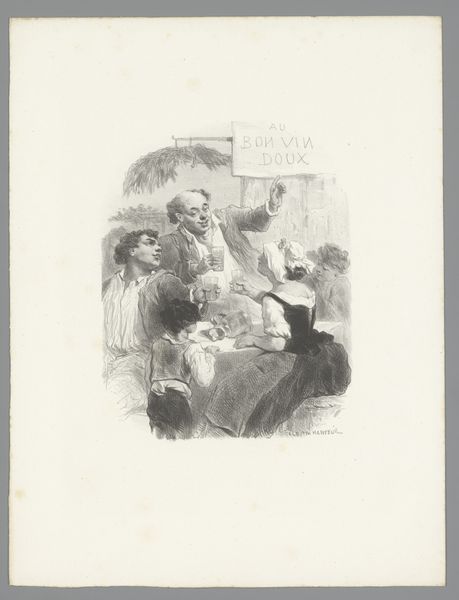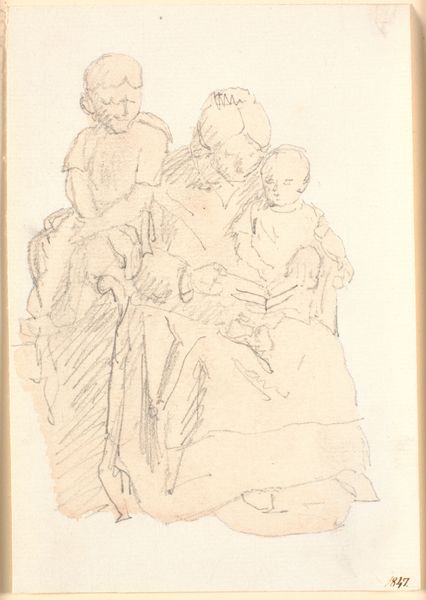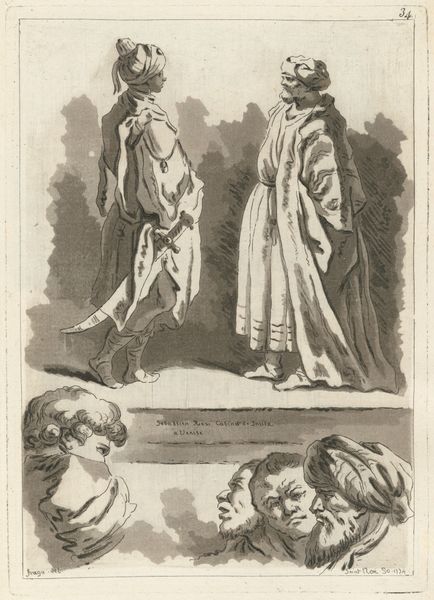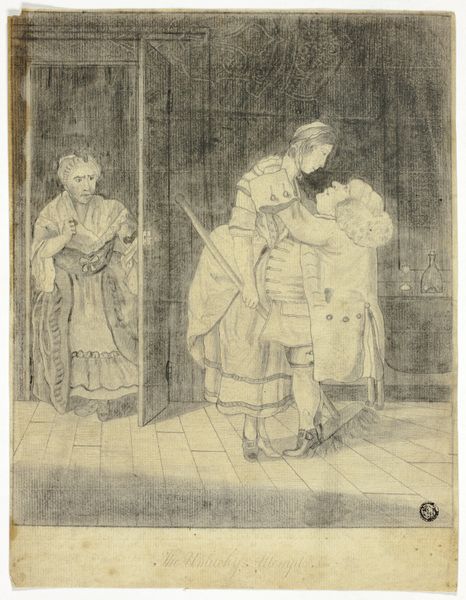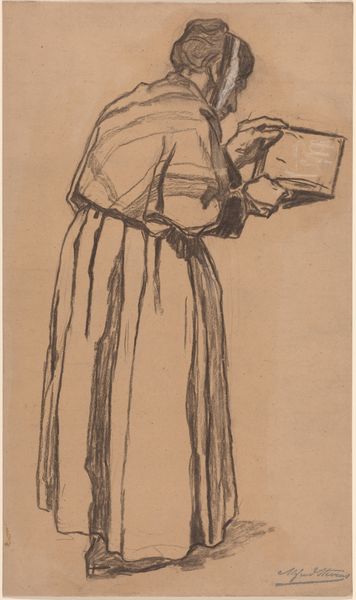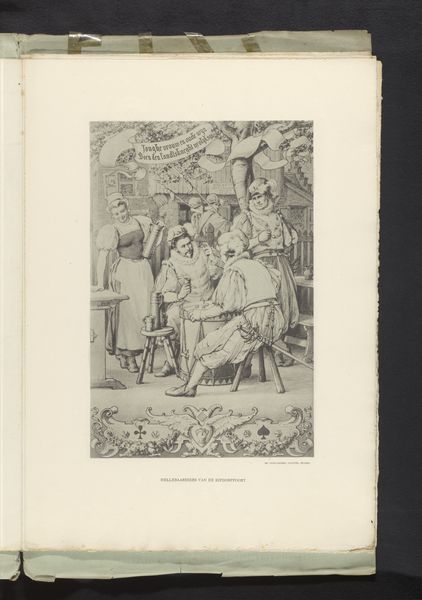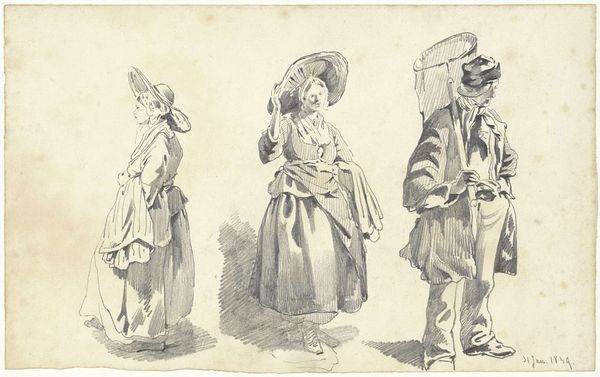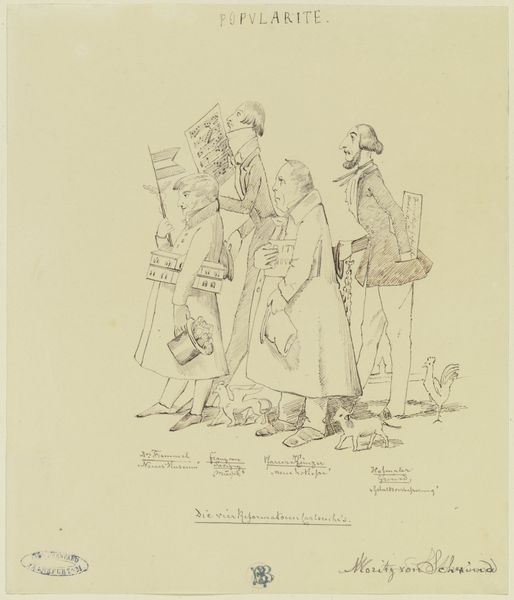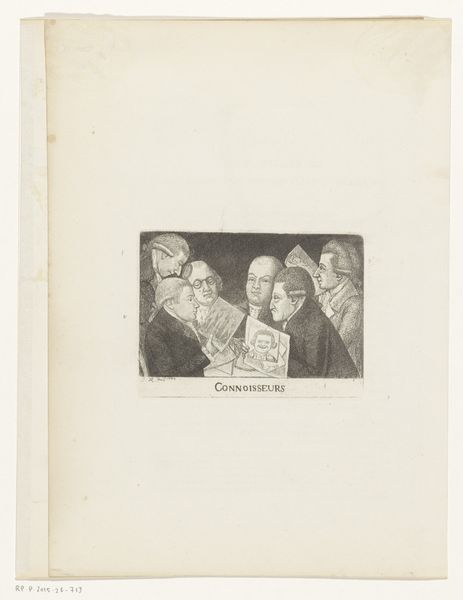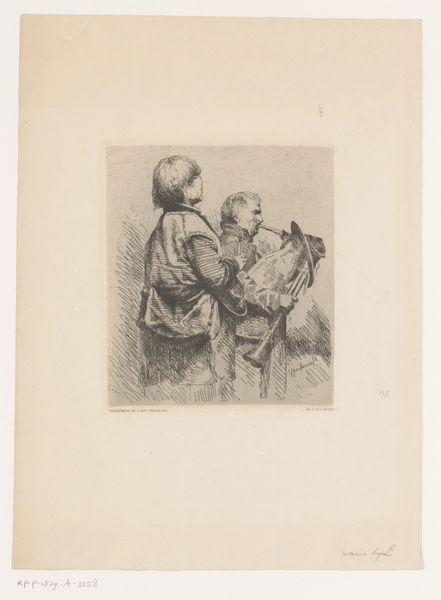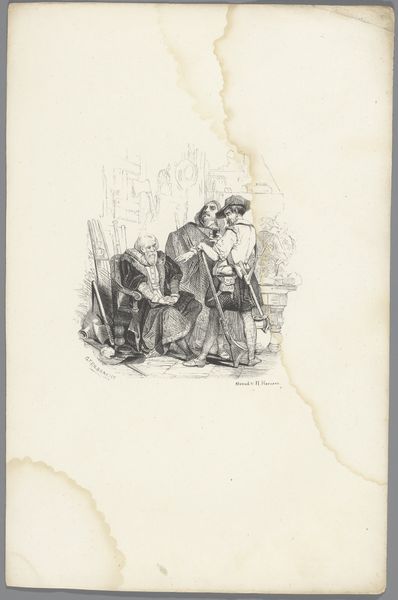
drawing, pencil
#
portrait
#
pencil drawn
#
drawing
#
pencil sketch
#
charcoal drawing
#
figuration
#
pencil drawing
#
pencil
#
line
#
pencil work
#
genre-painting
#
academic-art
#
realism
Dimensions: height 265 mm, width 177 mm
Copyright: Rijks Museum: Open Domain
Auguste Danse made this study of three singing altar boys in 1875, using graphite on paper. This is an example of traditional art materials, but not necessarily a traditional approach. Graphite pencils are relatively simple tools, yet capable of great subtlety and precision. Danse masterfully uses it to capture light and shadow on the boys' robes, and the texture of the paper adds to the overall effect. The way that the artist has rendered the folds of the vestments give the drawing a sculptural quality. The drawing is a study, likely for a larger painting. In focusing on the figures' garments and the devotional act of singing, Danse highlights the cultural significance of religious rituals in 19th-century society. The drawing's social value is evident in its depiction of labor; it demonstrates how the production process is tied to issues of class and consumption, and the amount of work involved. By appreciating the materials, the making, and the context, we can understand the full meaning of this seemingly simple artwork, challenging the distinctions between fine art and craft.
Comments
No comments
Be the first to comment and join the conversation on the ultimate creative platform.
